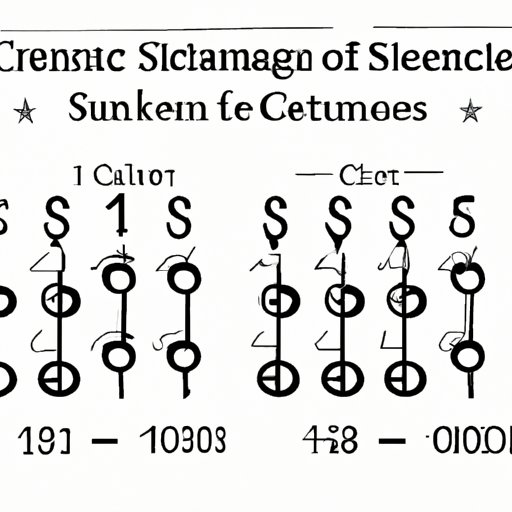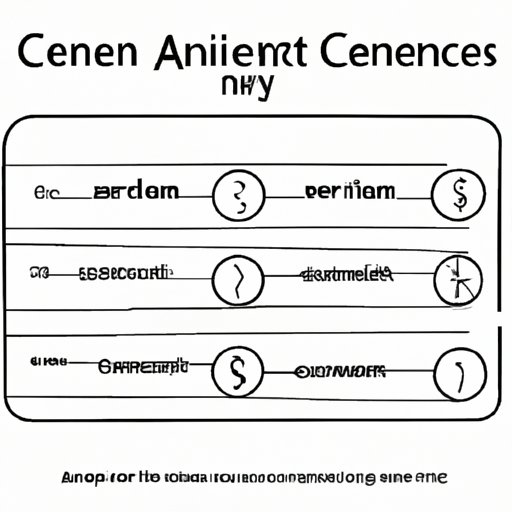Understanding Music Theory: How Many Cents Are in a Semitone?
As a musician or music enthusiast, you may have come across the terms semitones and cents when talking about intervals and tuning. While semitones are familiar as the smallest distance between two adjacent notes on a keyboard or guitar fretboard, cents may not be as well-known. However, cents are just as important in music theory as semitones. In this article, we will explore how many cents are in a semitone and why it matters.
What is Music Theory?
Before we delve into the specifics of semitones and cents, it is essential to have a good understanding of music theory. Music theory refers to the study of the structure and composition of music, including notes, harmonies, chords, rhythms, and melodies. Musicians and music students use music theory to analyze and create music, whether classical, jazz, rock, or any other genre.
Explanation of Semitones and How They Relate to Musical Intervals
In Western music theory, a semitone is the smallest interval between two adjacent notes in the chromatic scale. The chromatic scale includes all twelve pitch classes, such as C, C#, D, D#, E, F, F#, G, G#, A, A#, and B. The distance between C and C#, for instance, is a semitone, as is the distance between E and F. A tone or a whole step, on the other hand, is the interval of two semitones or the distance between two notes that have one note between them. Thus, the distance between C and D, or E and F#, is a tone.
What Are Cents and How Are They Used in Music Theory?
While semitones are the building blocks of Western music, they are not small enough to be practical for tuning and intonation purposes. This is where cents come into play. A cent is a unit used in music theory to measure the difference in pitch between two frequencies. One cent is one hundredth (1/100) of a semitone, or one hundredth of the difference between two adjacent notes in the twelve-tone equal temperament system (more on this later). Therefore, 1200 cents equal one octave or twelve semitones.
How Many Cents Are in a Semitone?
The answer to the question of how many cents are in a semitone is 100 cents. Since one semitone is a twelfth of an octave, which is 1200 cents wide, one semitone is equal to 100 cents. This means that every note in the chromatic scale is 100 cents away from the note that is one semitone above or below it. For example, the distance between C and C# or between E and F is 100 cents.
The Magic of Sound: Exploring the Mathematics of a Semitone
The physics of sound is fundamental to understanding the mathematics of music. Sound is the result of vibrations or waves that travel through a medium, such as air, water, or solids, and are perceived by the human ear as sound. The frequency of a sound wave is the number of cycles or vibrations in one second, expressed in Hertz (Hz). For example, the frequency of the A above middle C is 440 Hz.
In Western music, pitch is related to frequency, meaning that the higher the frequency, the higher the pitch, and vice versa. Furthermore, the ratio between the frequencies of two notes determines the interval between them. For example, the interval between A and E is a perfect fifth because the frequency ratio between these two notes is 3:2 (or 1.5:1).
Discussion of the Frequency Ratios That Correspond to Semitones
To understand the frequency ratios that correspond to semitones, we need to examine the twelve-tone equal temperament system(12-TET). In 12-TET, the octave is divided into twelve equally spaced intervals, each corresponding to one semitone. Each interval is a ratio of the twelfth root of 2 (2^(1/12)). Consequently, the frequency ratio between two notes that are one semitone apart is the twelfth root of 2 raised to the power of one. Therefore, the frequency ratio of a semitone is the twelfth root of 2, which is approximately 1.05946.
Conversion of Frequency Ratios to Cents
We can calculate the number of cents corresponding to any frequency ratio by using the formula:
cents = 1200 * log2 (frequency ratio)
For example, the frequency ratio of a perfect fifth (3:2) is 1.5. To find out how many cents this interval is, we plug the ratio into the formula:
cents = 1200 * log2 (1.5)
cents = 700.636
Thus, a perfect fifth is approximately 700 cents wide.

Key Signatures Unlocked: Discovering the Number of Cents in a Semitone
Key signatures are essential elements in music theory that determine the tonality of a piece of music. They affect the number of cents in a semitone, depending on the tuning system used. There are two primary tuning systems in Western music: equal temperament and just intonation.
In the equal temperament system, each semitone is divided into 100 cents, as established earlier. This means that the pitch ratio between any two notes in an equal-tempered scale is equal to the twelfth root of 2 raised to the power of the number of semitones between them. This tuning system allows for easy modulation between keys without requiring retuning of instruments.
Conversely, just intonation is a tuning system in which the intervals between notes are based on simple integer ratios between the frequency of the notes. This system produces intervals that are considered more harmonically pure than those in equal temperament, but it also results in some intervals being slightly out of tune, depending on the key.
Demystifying Tone and Semitone: How Many Cents Separate Them?
As we have discussed, a semitone is the smallest interval in Western music while a tone or whole step is two semitones wide. The number of cents in a tone is, therefore, twice the number of cents in a semitone, or 200 cents. For example, the distance between C and D is a tone, which is 200 cents wide. Understanding the difference between a tone and a semitone is crucial in developing a sense of melody, harmony, and tonality in music.
The Science of Music: Calculating the Cents in Every Semitone
While we know that a semitone is 100 cents wide, knowing how to calculate the number of cents for any interval can be useful in both music performance and composition. The formula for calculating the cents in an interval is:
cents = 1200 * log2 (frequency ratio)
where the frequency ratio is the ratio of the higher frequency to the lower frequency.
Let us take the example of the major third, which is four semitones above the root note. The frequency ratio of a major third is 5:4, and we can use the formula to calculate the number of cents in a major third as follows:
cents = 1200 * log2 (5/4)
cents = 386.314
Therefore, a major third is approximately 386 cents wide.
Mastering the Microtones: A Guide to Counting Cents in a Semitone
Microtones are intervals smaller than a semitone and are used in many non-Western music traditions, such as Indian, Middle Eastern, and African music. In Western music, microtones can be represented in cents, allowing for precise tuning of instruments and vocal intonation.
Different tuning systems affect microtones differently. In just intonation, microtones are derived from the same principles as the larger intervals, based on simple integer ratios between the frequencies of the notes. In equal temperament, microtones can be calculated by dividing the semitone into smaller parts. For example, a quarter tone is half of a semitone or 50 cents.
Practicing and performing microtones can be challenging, as they require a finely tuned ear and an understanding of the specific tuning system used. However, mastering microtones can add depth, richness, and expressiveness to music, and is an essential aspect of many musical styles.
Conclusion
In conclusion, the concepts of semitones and cents are foundational in music theory and have practical applications in music composition and performance. Understanding the relationship between frequency, pitch, and intervals is crucial in developing a sense of melody, harmony, and tonality, while knowledge of tuning systems such as equal temperament and just intonation is essential in interpreting and playing music from different eras and styles. With patience and practice, mastering semitones and cents can unlock new dimensions of creativity and expression in music.
